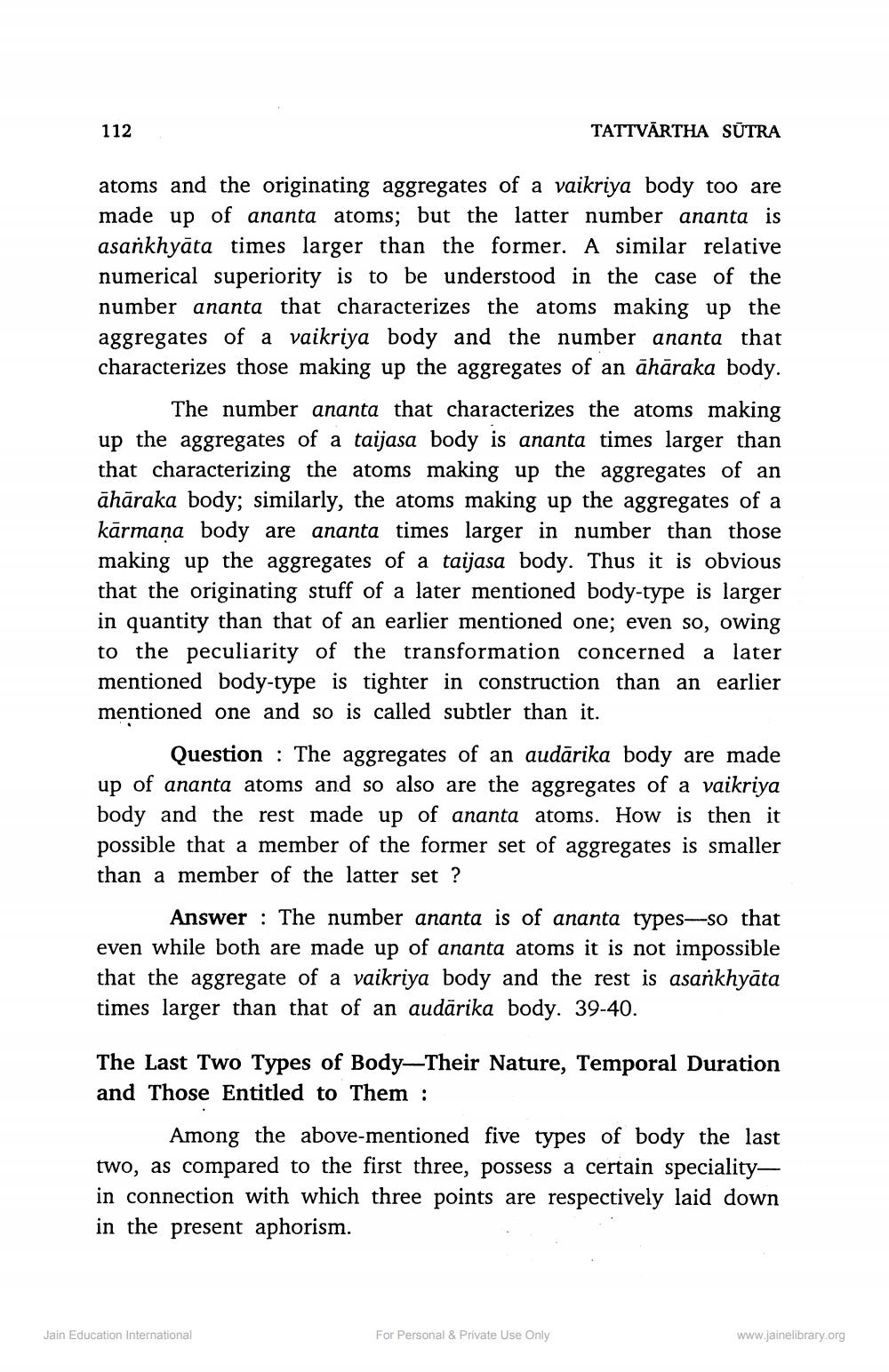________________
112
TATTVĀRTHA SŪTRA
atoms and the originating aggregates of a vaikriya body too are made up of ananta atoms; but the latter number ananta is asankhyāta times larger than the former. A similar relative numerical superiority is to be understood in the case of the number ananta that characterizes the atoms making up the aggregates of a vaikriya body and the number ananta that characterizes those making up the aggregates of an āhāraka body.
The number ananta that characterizes the atoms making up the aggregates of a taijasa body is ananta times larger than that characterizing the atoms making up the aggregates of an āhāraka body; similarly, the atoms making up the aggregates of a kārmana body are ananta times larger in number than those making up the aggregates of a taijasa body. Thus it is obvious that the originating stuff of a later mentioned body-type is larger in quantity than that of an earlier mentioned one; even so, owing to the peculiarity of the transformation concerned a later mentioned body-type is tighter in construction than an earlier mentioned one and so is called subtler than it.
Question : The aggregates of an audārika body are made up of ananta atoms and so also are the aggregates of a vaikriya body and the rest made up of ananta atoms. How is then it possible that a member of the former set of aggregates is smaller than a member of the latter set ?
Answer : The number ananta is of ananta types—so that even while both are made up of ananta atoms it is not impossible that the aggregate of a vaikriya body and the rest is asankhyāta times larger than that of an audārika body. 39-40.
The Last Two Types of Body—Their Nature, Temporal Duration and Those Entitled to Them:
Among the above-mentioned five types of body the last two, as compared to the first three, possess a certain specialityin connection with which three points are respectively laid down in the present aphorism.
Jain Education International
For Personal & Private Use Only
www.jainelibrary.org




